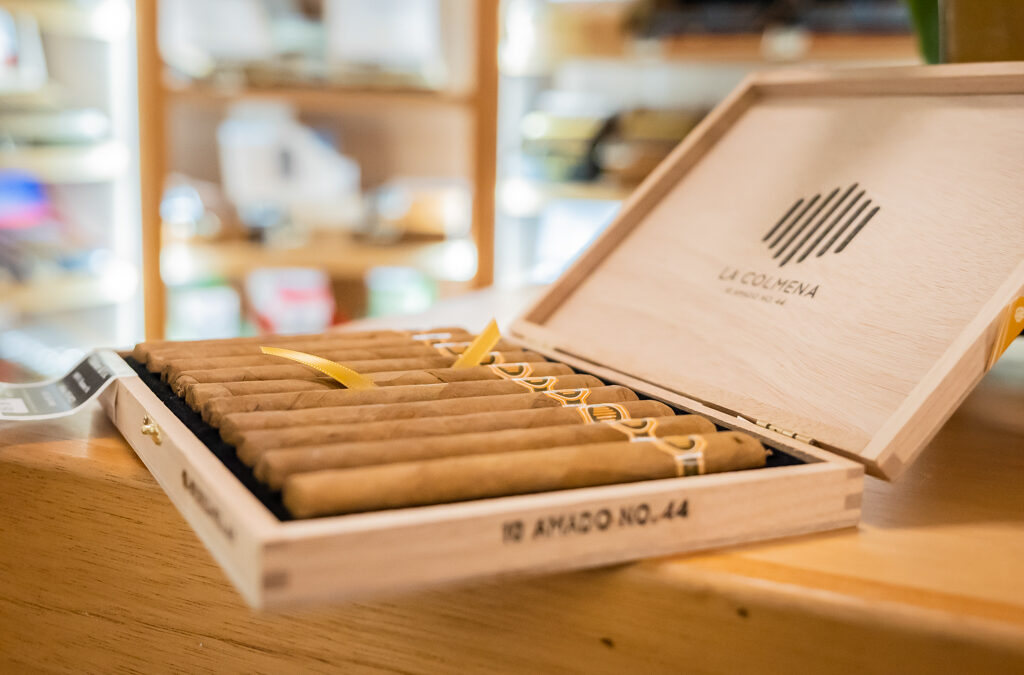There’s a saying that over 200 hands touch your cigar before the moment you clip and light it and this isn’t an exaggeration- it takes years to grow, dry, and form tobacco leaves into the cigars we know and love. Your carefully cultivated tobacco leaves will see nurseries, farmlands, curing barns, fermentation storage, manufacturing plants, and cedar storage rooms before they’re even shipped to cigar shops like Chaloner’s around the world.
Cultivating the Tobacco
Tobacco plants begin in nurseries where farmers nurture seeds for 6-10 weeks and prune the young plants before transplanting them to tobacco fields where they can be grown in the sun or shade. Large, shade-grown tobacco leaves are great for the wrapper but sun-grown tobacco can be used for any part of the cigar. During harvesting, different sections of the tobacco plant can produce different flavored leaves so an experienced harvester can start shaping the flavor and color of your cigar before the tobacco leaves have even left the field.

Curing the Leaves
Harvested tobacco leaves are brought to curing barns where they are hung upside down from narrow strips of wood called laths. They are then exposed to a precise temperature that will allow the carotenoids in the leaf to be slowly broken down as the leaf turns from green to yellow and, finally, brown. During this process, the leaves’ natural sugars, flavors, and aromas will begin to emerge.
There are several different curing methods:
-air creates a light and sweet flavor in a well-ventilated curing barn
-fire creates a high level of nicotine with low fires burning in the barn
-flue creates a high level of sugar in the tobacco with smokeless heat exposure
-sun creates high sugar, low nicotine leaves when left unexposed to cure

Fermenting
Before fermentation, leaves are inspected and sorted into their future roles in a cigar: filler, binder, or wrapper. The smallest or broken leaves are reserved for the filler, larger or imperfect leaves are used for the binder, and wrapper leaves are the biggest and most flawless of the batch as they will be what we see when we choose a cigar. The leaves are then stored to undergo a fermentation process where the nutrients used to grow the leaf are released, allowing the clean taste of tobacco to take center stage. Fermentation can take as little as six months or up to five years for high-quality cigars. Partway through this process, filler leaves will be stripped of their stem and then stored again to complete fermentation.
Rolling
Most cigars today are rolled by machine but, arguably, the best cigars are usually rolled by hand. Hand-rolled cigars are often created in teams, with one roller focusing on bunching filler leaves into a binder and the other carefully rolling the wrapper.
A roller will choose two to six filler leaves that must be bunched and laid evenly for a smooth burn. They will wrap the filler in a binder leaf and place it into a mold that will help it hold its shape until it is ready for its wrapper. The filler will be carefully trimmed before a roller winds the wrapper leaf evenly around the binder and secures it with vegetable paste.

Inspection, Packing, and Storage
Cigars are inspected to ensure they’ve been properly rolled, sealed, and sorted by shade before packing. Most are also labeled with their vitola (the size and shape), the name of the cigar maker, and the date. Finished cigars are stored in their box in a warehouse where the wrapper can dry, shrink, and solidify the cigar for three weeks to a year. Here, they will absorb the oils and the aromas of the other cigars in the box so they all have a similar taste and smell.
Centuries of experience, hundreds of hands, and years of work go into the making of cigars. Our elite cigar smoking experiences are enriched this delicate and intentional process of curating the right flavors, aromas, and colors we savor with every puff and wisp of smoke.

